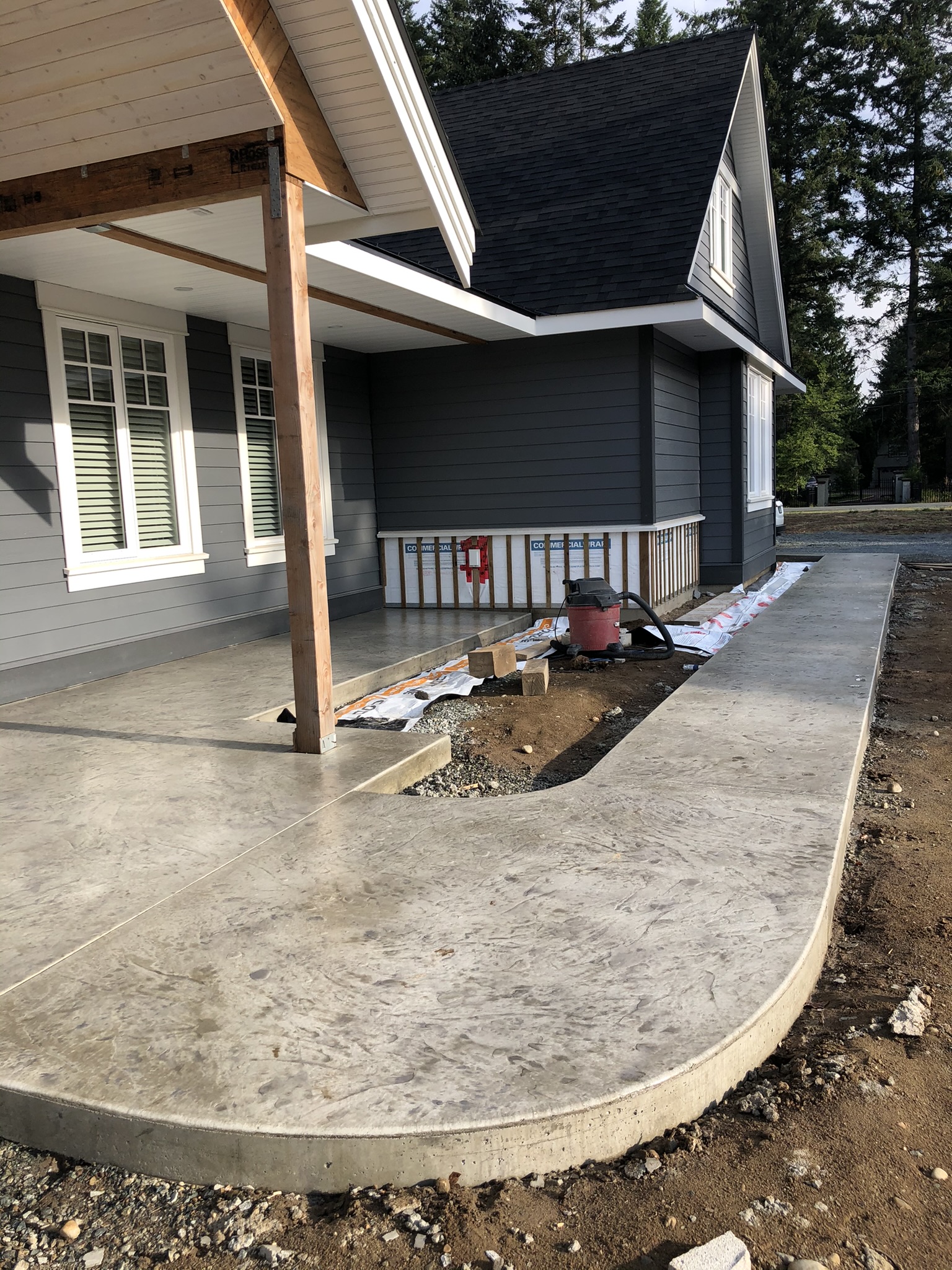FAQ questions to help with your concrete project.
What is the difference between cement and concrete?
Although the terms cement and concrete are often used interchangeably, cement is an ingredient of concrete. Concrete is a mixture of aggregates and paste. The aggregates are sand and gravel or crushed stone; the paste is water and portland cement. Concrete gets stronger as it gets older. Portland cement is not a brand name, but the generic term for the type of cement used in virtually all concrete, just as stainless is a type of steel and sterling a type of silver. Cement comprises from 10 to 15 percent of the concrete mix, by volume. Through a process called hydration, the cement and water harden and bind the aggregates into a rocklike mass. This hardening process continues for years meaning that concrete gets stronger as it gets older. So, there is no such thing as a cement sidewalk, or a cement mixer; the proper terms are concrete sidewalk and concrete mixer.
What does it mean to cure concrete?
Curing is one of the most important steps in concrete construction. Proper curing greatly increases concrete strength and durability. Concrete hardens as a result of hydration: the chemical reaction between cement and water. However, hydration occurs only if water is available and if the concrete’s temperature stays within a suitable range. During the curing period-from five to seven days after placement for conventional concrete, the concrete surface needs to be kept moist to permit the hydration process. New concrete can be wet with soaking hoses, sprinklers or covered with wet burlap, or can be coated with commercially available curing compounds, which seal in moisture.
What is air-entrained concrete?
Air-entrained concrete contains billions of microscopic air cells per cubic foot. These air pockets relieve internal pressure on the concrete by providing tiny chambers for water to expand into when it freezes. Air-entrained concrete is produced through the use of air-entraining portland cement, or by the introduction of air-entraining agents, under careful engineering supervision as the concrete is mixed on the job. The amount of entrained air is usually between 4 and 7 percent of the volume of the concrete, but may be varied as required by special conditions.
Why does concrete crack?
Concrete, like all other materials, will slightly change in volume when it dries out. Translated into dimensions-this is about 1/16 of an inch in 10 feet (.4 cm in 3 meters). The reason that contractors put joints in concrete pavements and floors is to allow the concrete to crack in a neat, straight line at the joint when the volume of the concrete changes due to shrinkage.
Will concrete harden underwater?
Portland cement is a hydraulic cement which means that it sets and hardens due to a chemical reaction with water. Consequently, it will harden under water.
What does 28 day strength mean?
Concrete hardens and gains strength as it hydrates. The hydration process continues over a long period of time. It happens rapidly at first and slows down as time goes by. To measure the ultimate strength of concrete would require a wait of several years. This would be impractical, so a time period of 28 days was selected by specification writing authorities as the age that all concrete should be tested. At this age, a substantial percentage of the hydration has taken place.
How do you control the strength of concrete?
The easiest way to add strength is to add cement. The factor that most predominantly influences concrete strength is the ratio of water to cement in the cement paste that binds the aggregates together. The higher this ratio is, the weaker the concrete will be and vice versa. Every desirable physical property that you can measure will be adversely effected by adding more water.
Talk To a Professional Today
Contact us today for a quotation or any questions regarding your project.
Learn More